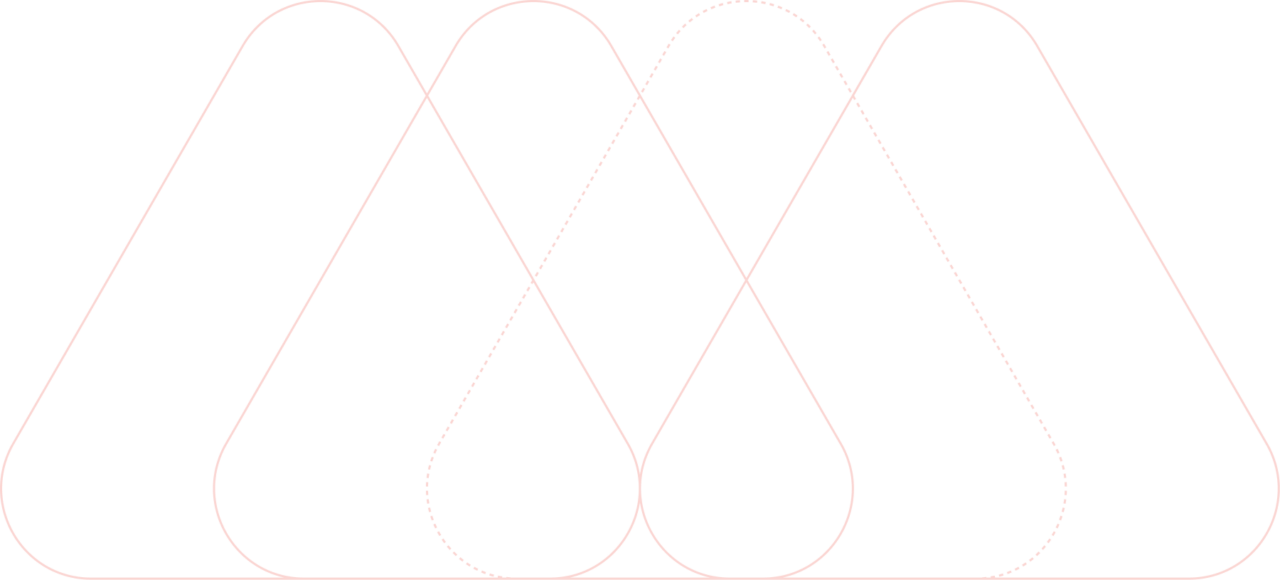Revenue Automation Software Buyer’s Guide


Are you automating enough?
As your business grows and scales to meet changing customer needs, shifting industry trends, and compliance requirements, you will inevitably find your revenue recognition processes becoming more complex.
To keep up with the rapid pace of change, your accounting team will need greater levels of automation and more agile technology that is purpose built for modern revenue recognition. According to MGI analysis, most companies who adopt an end-to-end revenue automation solution can see a positive return on investment (ROI) in just two quarters.
This buyer’s guide will provide a complete roadmap for researching, evaluating, and selecting the right revenue automation software for your company.
Explore the guide

What is revenue automation software?
While specific capabilities can vary, these solutions generally provide automation of revenue recognition and allocations, management of different types of revenue streams, analytics, reporting, and forecasting.
Modern revenue automation solutions are specifically designed with the needs of today’s revenue accountants in mind. These specialized solutions function as a revenue subledger by capturing transaction and revenue event data from an existing billing system, CRM, ERP, or payment gateway and then automating the revenue recognition process. The resulting journal entries can then be fed seamlessly back into the general ledger.
This increased revenue automation can help minimize manual processes, reduce risk, and prevent revenue leakage. And, with increased automation, revenue teams are able to devote more time to analytics and business partnering.
What key features and capabilities should you look for?
Look for an end-to-end revenue automation solution that includes:
Contract grouping
- Define and configure a hierarchy of rules to group transactions based on any attribute or set of attributes across data sources
- Process revenue contracts across multiple sets of books and rules without double entry
- Combine or separate contracts individually as required based on rules defined by the user
Performance obligations
- Automate revenue policies for when and how to recognize revenue with performance obligation templates
- Map transactions to performance obligations based on user-defined rules and automatically expand bundled transactions to their distinct performance obligations for recognition
- Assign forecasting, cost, and variable consideration rules to match policies
Contract modification management
- Match rules to policies for initial contract review versus contract modifications or revisions and SSP derivation dates
- Use pre-built, configurable rules to respond to different contract changes such as changes in price, quantity, and term, including their different rev rec implications, prospective or retrospective allocations, and revenue rescheduling
- Perform unlimited contract modifications, with categorization and tracking of modifications through revenue contract versions
Standalone selling price (SSP)
- Define SSP using formulas, uploaded values, derived residual or calculated by an SSP analyzer
- Use historical transactional data to analyze and determine SSP, as well as see trends of SSPs over time
- Perform transaction price allocations across all eligible performance obligations in the revenue contract as defined
Delivery-based rev rec
- Use a rules-based engine to define revenue events for complex pricing models, such as consumption-based pricing
- Automatically ingest event information from any source and automatically process events as received
- Create revenue journal entries to be recorded in the general ledger based on events, and automate the accounting for unbilled receivables, contract assets, and contract liabilities
Close process dashboard
- Navigate through contracts in real-time to identify and validate data exceptions at the source
- Proactively resolve variances in revenue recognition and identify the causes of period over period revenue changes with account and trend analysis
- Get access to a continuously evolving trial balance to ensure your revenue accounts tie-out
Revenue reporting
- Access customizable out-of-the-box reports, such as Waterfall Reports or Revenue Contract Roll Forward
- Schedule reports to run in the background and have the report results available for download
- Get access to real-time analytics on revenue recognized by product line, by geography, top customers, and more on a configurable dashboard
Cost management
- Create multiple cost types to manage and track contract costs, set up individual rules, formulas, capitalization methodologies, and margin impact
- Align cost types to performance obligations and set cost treatment to follow revenue or recognize costs independently
- Capture costs and adjustments, upload costs as part of revenue transactions or on their own and link to revenue, automatically account for changes to costs as they occur
Variable consideration (VC)
- Create multiple VC types to manage and track transaction price adjustments for items such as revenue share, rebates and SLA’s, and set up individual rules for calculating estimates, accrual timing, clearing, and expirations
- Adjust estimates, process actuals, and clear balances, as well as view changes and impact over time for transactions and contracts
- Flag transactions as variable consideration and set rules for including/excluding from allocations both upfront and as changes occur
How do you know if you need more revenue automation?
The following are business initiatives that may drive the need for revenue automation software:
Preparing for Mergers and Acquisitions (M&A) or Initial Public Offering (IPO)
If your company is preparing for M&A or an IPO, an audit of your Accounting Operations will likely be performed. This often reveals areas of potential improvement, such as the need for additional automation, controls, and process enhancements. New processes or controls may be required to validate completeness and accuracy from the source systems through revenue accounting and to the general ledger.
Reducing manual processes
Research shows that revenue teams may spend over half their time performing repetitive manual tasks. And 79% of revenue accounting team members report that they rely on multiple spreadsheets in addition to their ERP as part of their rev rec process.
Adding end-to-end revenue automation software can help save time and redirect resources to value-added tasks, reduce errors and risk, and increase employee satisfaction and retention.
“I see this pattern quite often in the industry – a ton of automation in the CRM space but hardly any in the back office specifically in Revenue Management. Accountants are spending significant time on manual, repetitive tasks. This is not only inefficient, but it also opens up the door to errors, especially if the company is still doing revenue calculations on Excel. Revenue automation can help to streamline processes, improve accuracy, and free up revenue teams to focus on more strategic work.”
– Subbu Ramanathan, Senior Manager, Deloitte & Touche LLP”
Minimizing customizations and hidden costs
You may assume that your current workarounds, spreadsheets, or your ERP’s revenue module will be cheaper than an end-to-end solution, but the costs can add up. As your go-to-market (GTM) approach evolves and your customizations multiply, the extra work to create and maintain customizations for these limited solutions can incur additional, ongoing costs. In fact, 65% of revenue accounting team members say customizations and ongoing maintenance led to a higher than anticipated total cost of ownership for their ERP revenue modules.
Adding end-to-end revenue automation software can significantly reduce the need for customization and manual tasks, thereby also potentially reducing costs.
Improving SSP analysis
How is your revenue accounting team handling SSP analysis today—is it a manually driven process? One out of five revenue accounting team members say that their inability to do automated, real-time SSP analysis is one of their biggest data challenges.
Look for revenue automation software that features a built-in SSP analyzer, which automatically reviews by line item or SKU and analyzes historical data to fully determine SSP values. Additionally, accountants can apply rules to allocate these SSP values across all the performance obligations (POBs) in a revenue contract in an automated fashion, in accordance with their revenue policy, and all while maintaining compliance with ASC 606 and IFRS 15.
Streamlining the reporting and close process
Is your accounting team creating custom reports, queries, or code to gather required data? You may also require a third party or IT engagement to pull the data from multiple sources. This additional work can lead to a delayed close, meaning there’s less time for a CFO and the rest of the C-suite and Board of Directors to finalize all the financial summaries, forecasts, and overall story for earnings calls and speaking with investors.
Adding a solution with real-time analytics and a close process dashboard can allow you to achieve a high-level understanding of financial data for the current open period, identify data problems, mitigate revenue errors, or make adjustments throughout the month that allow for real-time, continuous GAAP revenue reporting. Look for a solution that provides revenue reports out-of-the-box, including revenue and deferred revenue waterfalls, disclosure reports, and audit trails.
“The dreaded month end close which every Office of the Close team loves to hate; As someone who has seen firsthand the rigors of closing the books with manual and lengthy close cycle processes, I urge businesses to take a close look at their revenue accounting processes and consider how automation can help to improve them. By doing so, businesses can not only improve the efficiency and accuracy of their revenue reporting, but they can also help to reduce costs, improve compliance, and help to create a more fulfilling and rewarding work environment for their revenue team.”
– Subbu Ramanathan, Senior Manager, Deloitte & Touche LLP”
Reducing audit time and costs
Instead of automated systems, you may be stuck with headaches like manual processes and data that must be exported into spreadsheets in order to gain the appropriate insights. Not only does this waste valuable time for the accounting team, as they have to handle more manual tasks associated with a company’s revenue recognition, but there is also more effort required by an auditor to validate the accuracy and completeness of that process.
This can increase your company’s overall risk profile, an auditor’s workload, and time spent by internal employees supporting the audit. A whopping 65% of revenue accounting team members report concerns about the risk of misstatement because of existing manual processes and control risks.
To help mitigate risk and reduce overall company costs as the business grows, it’s imperative to maximize the amount of automation within revenue accounting processes.
Improving job satisfaction and retaining employees
It’s clear that the lack of automation in the revenue process is causing employees to be overwhelmed and stressed at work. A staggering 63% of revenue accounting team members report poor revenue processes affect their mental health. And 65% report working past midnight at least once in the last year.
In addition to the stress, manual processes, repetitive work, and lengthy close processes all reduce revenue teams’ abilities to focus on strategy, analytics, and business partnering, often resulting in frustration, exhaustion, and a lack of purpose.
If you or your team are facing any of these pain points, it may be time to consider solutions that deliver additional automation capabilities.

How do you choose the right revenue automation solution for your business?
The following is a roadmap for evaluating and selecting the right solution for your business:
Understand the needs of your team
By speaking with revenue accounting team members early in the process, you can understand the obstacles they’re currently facing. For instance, 74% of revenue accounting team members agree that their team needs to focus more on analytics and business partnering, but a lack of automation is holding them back
To get started, list out the risks and costs associated with the current process. Use team member feedback and outside expertise if needed to compile a list of preliminary solutions and recommendations. It is rare that one solution will solve every one of your team’s concerns, so it is imperative to sift out the best solution for the needs of your team.
Understand the needs of the business
Speak with other stakeholders within the business to understand both current and future use cases and the needs of other teams. Leverage their knowledge of processes and how sales data is captured to feed into revenue recognition processes. You will need their assistance to implement and enforce new processes. Stakeholders are not limited to, but may include:
- IT: Loop IT into the conversation early on to get their input and buy-in. They can help evaluate vendors and solutions to make sure they align with needs, security, policies, processes, etc.
- Billing Ops: Orders and billing teams will be impacted by any new revenue recognition process. Understand how their current systems and processes will work with a new rev rec solution.
- Go-to-market: Evaluate your organization’s future go-to market commercial strategy and choose a solution flexible enough to handle likely future offerings. For example, your organization may be planning to launch bundles or ‘as-a-service’ offerings based on subscriptions and/or consumption.
Document current and future business use cases
How are things being done now and how would you like to see them change? 68% of revenue accounting team members report not having the right technology to address growing demands from the business.
To find the right technology for your growing business use cases, start by documenting them or creating examples in a spreadsheet. Include contract information, SSP allocations, billing and revenue accounting waterfall, and the journal entries you expect a solution to create.
Be inclusive of all use cases that are being targeted for automation to allow for a flexible system design and end-to-end automation. If you’re striving for a complete solution, even the edge cases need to be documented. If you have many occurrences of a pattern, make sure you have a use case and an example for it. This is the only way you will be able to determine which solution will most closely meet your needs.
Define your technical requirements and control needs
Once you’ve spoken with impacted stakeholders and documented current and future use cases, it’s time to work with IT to understand how the solution will work with your existing tech stack and corporate requirements. As you perform this exploration, you may find that upstream processes are disjointed and not “revenue aware.” This results in friction across the whole quote-to-cash process.
Compile a list of must-have revenue automation capabilities that your team will require from a new point solution. These may include automated features like POB grouping, SSP allocations, contract modifications, disclosure reports, and internal controls.
Secure executive buy-in
While 79% of revenue accounting team members agree that they need higher levels of automation, 67% say they struggle to get buy-in from leadership in order to implement these new solutions. Bringing leadership up to speed on the current process, risks, and the implications for supporting a new go-to-market model can help make the business case for automation.
But getting buy-in from the top, especially the CFO, can be a challenge. So, what’s the best way to secure executive buy-in? Treat this like a sales pitch, complete with compelling events and a deep dive into discovery. Understanding the CFO’s perspective and employing sales techniques can turn a pitch into a compelling story that drives support for crucial initiatives.
Remind your executives about the benefits of end-to-end revenue automation for the business—such as improved efficiency, compliance, accuracy, forecasting, employee mental health, reduced attrition, and more. Establish a case for change and clearly define the objective of the project and the necessary architecture. For example, will this be a revenue automation project or is it an end-to-end quote-to-revenue transformation?
“How do you get the skills to not only sell this internally to get buy in, but then also make sure it’s effective? If you have a team, you’re responsible then to go make sure that they’re trained and they’re onboarded and they’re actually using the system and that you can provide the outputs that you said you could to the CFO or CAO, whoever. So I think it’s just about that technology integration is really top of mind and a big hurdle for a lot of my clients right now just because they’re still bogged down with the day-to-day stuff.”
– Jill Hauck, Revenue and Accounting Operations Consultant
How do you test and evaluate vendor offerings?
Once you’ve clarified the scope of the project, documented use cases, and discovered solutions that may meet your requirements, it’s time to test and evaluate those vendor offerings.
Make your vendors explain how they will handle your use cases and demo the key use cases. If possible, use real contract data to prototype and test each solution—this makes it easier to compare and contrast results.
Determine how you will reconcile and validate the system for completeness and accuracy. This includes making sure you capture all of the upstream data, everything processed in the subledger, and the results passed through to the general ledger.
Ask vendors how many of their customers achieve full automation and ask for customer references, particularly businesses with similar requirements. For best results, use the same demo script for every vendor, this way, you can test and evaluate each solution against the same list of capabilities and use cases.

What are some key questions to ask?
- Can you dedicate expert resources focused on rev rec, such as engineering, support, customer success?
- What percentage of use cases are handled with standard functionality?
- How many customer implementations have been done out-of-the box and how many require customizations?
- Can you provide examples of customer success stories and a list of references?
- Is the rev rec module truly integrated with the rest of the ERP (upstream / downstream)?
- How does the system integrate with your other products in your quote-to-revenue process
- What standard reporting is provided for real-time revenue position visibility?
- What is your Total Net Cost of Ownership, including the platform, implementation, customizations?
- Are modern pricing models and rev rec accounting fully supported?
- How easy is it to integrate detailed revenue data into your enterprise reporting solution?
- Are there any transaction volume restrictions?

Making the decision and planning for implementation
-
Summarize and compare evaluation results for all the vendors
-
If necessary, remind everyone of the goals of the project and review requirements
-
Exclude solutions that don’t meet high-level requirements
-
Make a recommendation and be sure the document why the solution
-
Present recommendations to executives
-
Plan for the time and resource commitment required to get the job done right, the first time.
